A fantastic spring recipe aligned with Traditional Chinese Medicine (TCM) ideology focuses on ingredients that support the liver and promote detoxification, as well as ingredients that are nourishing, fresh, and in season. This tasty recipe featuring lovely spring...
The Dos and Do Nots of Acupuncture Appointments
The Dos and Do Nots of Acupuncture Appointments
Acupuncture is a holistic therapy that can offer various benefits when done correctly. While many people around the world are versed with acupuncture and the process of treatments, others may be a bit in the dark as to what constitutes good etiquette before, during, and after acupuncture. To help patients have a safe and effective acupuncture experience, here are some do’s and don’ts to keep in mind:
Do’s:
-
Research Your Practitioner: Choose a licensed and qualified acupuncturist. Check their credentials, experience, and reviews to ensure they are reputable.
Share Your Medical History: Be honest about your medical history, medications, and any current health conditions with your acupuncturist. This information helps them tailor the treatment to your specific needs.
Arrive on Time: Punctuality is appreciated. Arriving on time for your appointment ensures that you get your full treatment session without causing delays for other patients.-
Ask Questions: Don’t hesitate to ask questions about the treatment, its potential benefits, and any potential side effects or risks associated with it. The more informed you are, the more comfortable you will likely be during treatments.
-
Arrive Relaxed: Try to arrive at your appointment in a calm and relaxed state of mind. Coming in tense and rushed can affect the effectiveness of acupuncture. If you are being treated for stress or anxiety, be prepared for a relaxing session away from your daily stress.
-
Wear Comfortable Clothing: Wear loose and comfortable clothing that allows easy access to the areas where the acupuncture needles will be inserted. Pajamas, loose shorts, and wide leg pants are perfect for acupuncture!
Practice Good Hygiene: Maintain good personal hygiene before your appointment. This includes bathing or showering, brushing your teeth, and wearing clean clothing. Remember that your practitioner will need to be in close proximity to you during the treatment process.
Hydrate: Drink plenty of water before and after your acupuncture session to stay hydrated. Proper hydration can help improve the flow of energy (qi) in your body.-
Follow Post-Treatment Instructions: Your acupuncturist may provide specific guidelines for aftercare. Follow these instructions, which may include avoiding strenuous activities, caffeine, or alcohol.
Don’ts:
-
Don’t Eat a Heavy Meal Before Treatment: Avoid eating a heavy meal right before your acupuncture session. A light meal or snack a few hours before is preferable.
-
Don’t Overexert Yourself: After acupuncture, avoid strenuous physical activities or heavy lifting for at least a few hours. Rest is important to let your body respond to the treatment.
-
Don’t Panic About Needles: While acupuncture involves needles, they are extremely thin and generally not painful. Don’t let a fear of needles prevent you from trying this therapy.
-
Don’t Expect Instant Results: Acupuncture is often a gradual process, and it may take several sessions to experience significant improvements in your condition. Be patient and consistent with your treatments. Your practitioner will often communicate how many sessions they would like to see you for being a re-evaluation is conducted to determine your progress and next steps.
-
Don’t Discontinue Other Medical Treatments: Acupuncture is often used as a complementary therapy alongside conventional medical treatments. Don’t discontinue any prescribed medications or treatments without consulting your healthcare provider.
-
Don’t Avoid Communication: If you experience any discomfort or unusual sensations during your acupuncture session, inform your practitioner immediately. They can adjust the needles if need be, or explain what these sensations are and why you may be experiencing them.
-
Don’t Bring Strong Fragrances: Avoid wearing strong perfumes, colognes, or scented lotions to your appointment, as some people may have sensitivities or allergies to fragrances. Lotions and oils should be avoided as well, as the practitioner needs to palpate your skin in order to find the acupuncture point.
-
Don’t Fidget During Treatment: Try to remain still during the acupuncture session, both during the needling process and while retaining the needles. Excessive movement can disrupt the placement of the needles and hinder the effectiveness of the treatment. Avoid trying to “help” the practitioner by moving your body as they palpate, as they are trying to locate the acupuncture point, and moving can be disruptive in that process.
Avoid Talking During Needle Removal: A good practitioner is trained to count the needles they use in your treatment, and then count again as they remove them to ensure you don’t accidentally go home with a needle. Hold your questions until after the needles are pulled to allow your practitioner to focus on counting.
Don’t Make Sudden Cancellations: If you need to cancel or reschedule an appointment, try to provide notice as early as possible. Acupuncturists often have tight schedules, and advance notice allows them to accommodate other patients.
-
Adhering to these general rules will help ensure that you have the best possible experience during your treatments. Remember that acupuncture is generally safe when performed by a trained and licensed practitioner. If you have specific concerns or questions about your acupuncture treatment, always consult with your healthcare provider or acupuncturist for personalized guidance.
Recipe: Spring Detox Vegetable Soup
Natural Beauty: Why Cosmetic Acupuncture Triumphs Over Botox
In the quest for eternal youth and flawless skin, the beauty industry has witnessed a surge in non-invasive cosmetic procedures. Among these, Botox injections have long been considered a go-to solution for reducing wrinkles and fine lines. However, in recent years, a...


